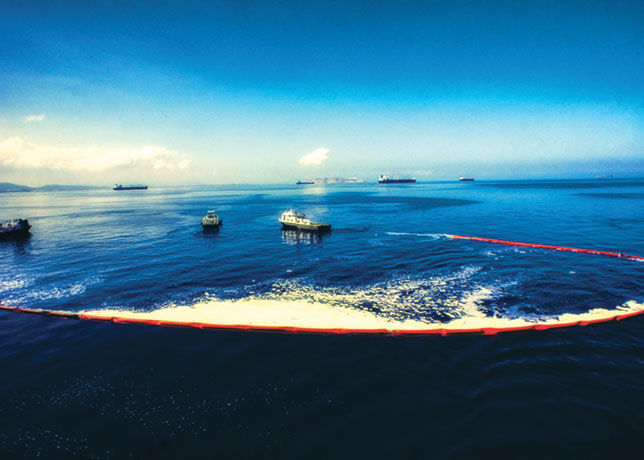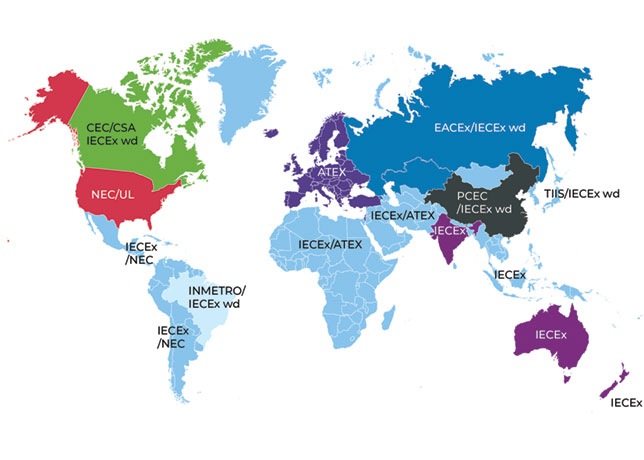
 Fully automated oil spill detection allows for more time to decide on the appropriate response Source: Miros
Fully automated oil spill detection allows for more time to decide on the appropriate response Source: Miros
In any offshore incident, every second counts. Early and accurate alarms allow for a swift response, reducing potential threats to people, the environment, assets, and reputation, Jonas Røstad tells OGN
Detecting and responding to an oil spill in a swift fashion can be the difference between an unfortunate incident and an environmental nightmare.
According to estimates from the European Space Agency (ESA), in any given year, some 4.5 million tonnes of oil are spilled.
But while the ESA operates state-of-the-art satellites, they aren’t able to constantly monitor every stretch of ocean, and when they do detect something, it can take time to relay back information to the relevant authorities.
'In any offshore incident, every second counts; it is the speed of the response, and not simply the scale, which is key. Early and accurate alarms allow for a swift response, reducing potential threats to people, the environment, assets, and reputation,' says Jonas Rostad, Chief Commercial Officer at Miros, a Norwegian company that specialises in measuring real-time ocean insights.
Ensuring oil is not allowed to spread across large areas makes it easier to manage and reduces the size of the clean-up operation, in turn minimising the chance of further pollution.
'But this hinges on timing. Another good thing with radar-based oil spill detection is that the recorded data eliminates any doubts and helps to remove biased reporting,' says Rostad.
THOSE WITHOUT WORKING OSD ALARMS ARE TAKING A BIG RISK
There are numerous well-documented examples of what can happen when oil spill detection (OSD) alarms do not function as they should.
 |
Reliable oil spill surveillance for early alarm enables fast and efficient recovery of oil Source: Miros |
A ship carrying Venezuelan crude was responsible for a major spill in 2019 that impacted almost a third of Brazil’s coastline, threatening mangroves, coral reefs, and whale breeding grounds.
According to reports, the tanker appeared to spill the crude roughly 700 km from the coast but failed to raise the alarm, and for several months the oil washed ashore.
Hundreds of animals were killed, dozens of beaches were locked down and there has been lasting damage to Brazil’s coastline.
Contrast this with a bunkering accident that led to the release of fuel in the Bay of Gibraltar earlier this year, where the spill was discovered in hours and cleaned up in a matter of days.
'An effective and sensitive OSD system also helps recovery vessels to locate the oil slick, aiding in the positioning of booms and skimmers,' says Rostad. 'It is worth investing in, because the reputational and environmental risks of not doing so are massive.'
PLAN FOR THE WORST TO GUARD AGAINST ALL EVENTUALITIES
In its quest to enhance the safety and efficiency of offshore operations, while keeping the environmental impact of the sector to a minimum, ocean insights leader Miros has developed a unique OSD system.
Crucially, it can analyse and interpret multiple indicators at the same time, meaning the alarm is only set off if a certain combination is identified.
The likes of wave height and behaviour, surface characteristics, and drift are all measured using marine radars, supported by infrared and daylight cameras.
All this data is securely collected, analysed and processed, before a signal is sent to the end user.
Built around a radar, the system is versatile and can be deployed during mechanical oil recovery or chemical dispersant operations as it tracks the oil slick’s movement over time and records data for analysis once the incident has concluded.
It also empowers users with early detection and mobilisation abilities, reducing the risk of oil spreading extensively and facilitating easier spill containment.
By integrating radar with daylight and infrared cameras, the system enhances classification capabilities, providing valuable data for response teams, even in low visibility conditions or during nighttime operations.
Rostad says: 'As the saying goes, by failing to prepare you are preparing to fail. Companies may think their procedures are watertight, but there is always a chance that things can go wrong - even the most unlikely events should be factored in.'
It is a legal requirement for offshore installations to have measures in place for combatting oil spills and detection systems should be the cornerstone of any contingency plan.
Having the correct technology in place significantly reduces the potential for both environmental impact and the cost of response operations.
A SUCCESSFUL CLEAN-UP HINGES ON SPEED OF RESPONSE
In the unfortunate event that a spill does occur, the first few hours are crucial, and radar-based systems means operators can maximise this crucial window.
Early alarm generation facilitates an early start of recovery, better understanding of oil spill dynamics and better chances of the clean-up operation being effective.
There is a growing appreciation of the importance of OSD detection technology in providing a last line of defense against spills.
Ports and coastal areas have only recently begun to move beyond simply visually monitoring the water with the adoption of more complex systems, which have long been a mainstay of the offshore energy industry.
Last year, Miros secured a contract with Petrobras to fit a cloud-based add-on to the Brazilian oil major’s existing OSD system to facilitate real-time data sharing among various stakeholders.
By fitting this software it made the detection system tamper proof, safeguarding the validity of the data being fed back to the environmental regulator.
SAFEGUARDING ENVIRONMENTS IN THE MIDDLE EAST
Similarly, Miros’ OSD system was installed at a natural gas power plant in the Middle East to monitor the facility and its associated water production complex.
Crucially, the plant is surrounded by high-pressure water jets that cause nearby water to look shiny, meaning they could be mistaken for an oil spill.
To minimise the chance of wasting valuable time and resources on a false alarm, an X-band radar was deployed as part of a Miros OSD system and delivered to the facility.
The X-band radar was fitted on land, 20 m above ground level, in conjunction with the OSD system, giving it the capacity for monitoring and assessing numerous indicators at once.
'At the heart of this project was the need to prevent false alarms that can impact the plant’s operations and the reputation of its owners,' explains Rostad.
'We were able to use the water jets to calibrate the OSD system so that areas that could set off the system were blocked. Doing so reduced the chances of a mistake arising, while at the same time ensuring that if a leak did occur, it would be flagged within five minutes of appearing.
'Compared to the previous system, which involved analysing the water entering the plant through its reservoirs, this was a marked improvement, allowing for increased certainty and operational efficiency,' he adds.
DO THE RIGHT THING
Miros has real pedigree in this key area of sea-state monitoring, having created the first OSD system two decades ago.
Since then, the company has been behind the installation of the majority of OSD systems globally, something it continues to be at the forefront of.
But while Miros has and continues to be a leader in this regard, it is also clear that responsibility for protecting our oceans is incumbent upon all, particularly operators.
Rostad says: 'Many companies will invest in OSD systems because offshore regulations mean they have to; we think they should do it because they want to, while society expects everyone to be environmentally accountable.
All those involved in the maritime, oil and gas and renewables sectors should want to minimise the impact of operations on the environment, and safeguarding against oil spills is one of the best ways to do this.
It is a case of companies taking the initiative and getting ahead of the rules, rather than waiting for regulators to crack the whip.
If a company is told to put OSD in place for compliance purposes then it becomes a box ticking exercise and they are more likely to go for the cheapest system.
As the reliability, quality and effectiveness of the system was never the most important factor, upgrading or enhancing the OSD is sometimes impossible.
'But things are changing, and industry is increasingly seeing OSD as an asset, rather than simply a requirement. Radar-based systems mean regulators and operators can rest assured that any potential incidents will be flagged almost immediately, meaning they can take appropriate actions. For our part, Miros is working hand in hand with key customers to hone our OSD systems so that they can meet the changing needs of industry,' concludes Rostad.



















































































